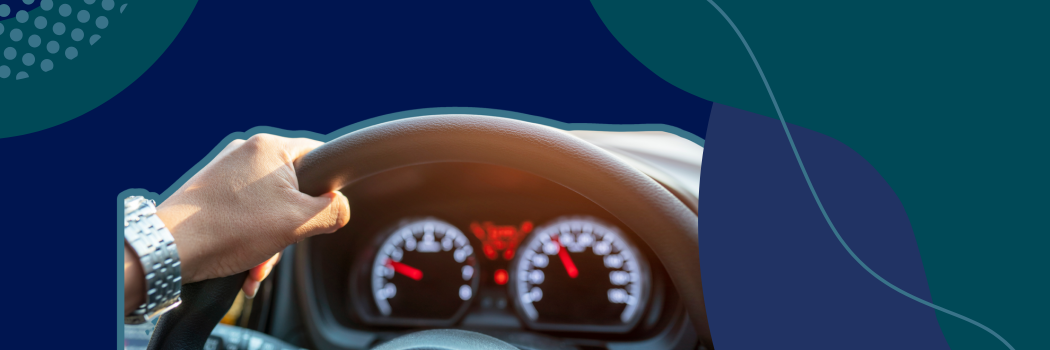Highlights
• The deadline for furnishing individual statements under Sections 6055 and 6056 for 2020 has been extended for 30 days.
• Good-faith transition relief from penalties has also been extended for a final time for 2020 reporting.
• The due date for filing returns with the IRS for 2020 is not affected.
Important Dates
March 2, 2021-Deadline for furnishing 2020 Forms 1095-B and 1095-C to individuals
March 1, 2021-Deadline for 2020 filing with the IRS in paper form
March 31, 2021-Deadline for 2020 filing with the IRS electronically
On Oct. 2, 2020, the Internal Revenue Service (IRS) issued Notice 2020-76 to:
• Extend the due date for furnishing forms under Sections 6055 and 6056 for 2020 from Feb. 1, 2021, to March 2, 2021; and
• Provide a final extension of good-faith transition relief from penalties related to 2020 information reporting under Sections 6055 and 6056; and
• Provide additional penalty relief related to furnishing 2020 forms to individuals under Section 6055. Under this relief, employers will only have to provide Form 1095-B to covered individuals upon request.
The due date for filing forms with the IRS for 2020 remains March 1, 2021 (since Feb. 28, 2021, is a Sunday), or March 31, 2021, if filing electronically.
Action Steps
The IRS is encouraging reporting entities to furnish 2020 statements as soon as they are able. No request or other documentation is required to take advantage of the extended deadline.
According to Notice 2020-76, this is the last year that the IRS intends to provide good-faith relief from penalties, since it was intended to be transitional relief only.
Sections 6055 and 6056 Reporting
Sections 6055 and 6056 were added to the Internal Revenue Code (Code) by the Affordable Care Act (ACA).
• Section 6055 applies to providers of minimum essential coverage (MEC), such as health insurance issuers and employers with self-insured health plans. These entities will generally use Forms 1094-B and 1095-B to report information about the coverage they provided during the previous year.
• Section 6056 applies to applicable large employers (ALEs)—generally, those employers with 50 or more full-time employees, including full-time equivalents, in the previous year. ALEs will use Forms 1094-C and 1095-C to report information relating to the health coverage that they offer (or do not offer) to their full-time employees.
Extended Furnishing Deadline
The IRS has again determined that some employers, insurers and other providers of MEC need additional time to gather and analyze the information, and prepare 2020 Forms 1095-B and 1095-C to be furnished to individuals.
For 2020, the furnishing deadline was Feb. 1, 2021, Since Jan. 31, 2021, is a Sunday. Notice 2020-76 provides an additional 30 days for furnishing the 2020 Form 1095-B and Form 1095-C, extending the due date from Feb. 1, 2021, to March 2, 2021.
Despite the delay, employers and other coverage providers are encouraged to furnish 2020 statements to individuals as soon as they are able.
Filers are not required to submit any request or other documentation to the IRS to take advantage of the extended furnishing due date provided by Notice 2020-76. Because this extended furnishing deadline applies automatically to all reporting entities, the IRS will not grant additional extensions of time of up to 30 days to furnish Forms 1095-B and 1095-C. As a result, the IRS will not formally respond to any requests that have already been submitted for 30-day extensions of time to furnish statements for 2020.
Impact on Filing Deadline
The IRS has determined that there is no need for additional time for employers, insurers and other providers of MEC to file 2020 forms with the IRS. Therefore, Notice 2020-76 does not extend the due date for filing Forms 1094-B, 1095-B, 1094-C or 1095-C with the IRS for 2020. This due date remains:
• March 1, 2021, if filing on paper (since Feb. 28, 2021, is a Sunday); or
• March 31, 2021, if filing electronically.
Because the due dates are unchanged, potential automatic extensions of time for filing information returns are still available under the normal rules by submitting a Form 8809. The notice also does not affect the rules regarding additional extensions of time to file under certain hardship conditions.
Final Extension of Good-faith Transition Relief from Penalties for 2020
Notice 2020-76 also provides a final extension of transition relief from penalties for providing incorrect or incomplete information to reporting entities that can show that they have made good-faith efforts to comply with the Sections 6055 and 6056 reporting requirements for 2020 (both for furnishing to individuals and for filing with the IRS). According to Notice 2020-76, this good-faith relief was intended to be transitional relief. Therefore, this is the last year that the IRS intends to provide this relief.
This relief applies to missing and inaccurate taxpayer identification numbers and dates of birth, as well as other information required on the return or statement. No relief is provided for reporting entities that:
• Do not make a good-faith effort to comply with the regulations; or
• Fail to file an information return or furnish a statement by the due dates (as extended) (except as otherwise provided in Notice 2020-76).
In determining good faith, the IRS will take into account whether a reporting entity made reasonable efforts to prepare for reporting the required information to the IRS and furnishing it to individuals (such as gathering and transmitting the necessary data to an agent to prepare the data for submission to the IRS or testing its ability to transmit information to the IRS). The IRS will also take into account the extent to which the reporting entity made reasonable efforts to prepare for this reporting requirement, such as gathering and transmitting the necessary data to an agent to prepare the data for filing or testing its ability to transmit information to the IRS.
In Notice 2019-63 extending the relief for 2019, the IRS requested comments as to whether an extension of good-faith reporting relief under Section 6056 would be necessary for future years and, if so, why. Very few comments were submitted, which indicated to the IRS that this relief may no longer be necessary. In Notice 2019-63, the IRS also requested comments as to whether and how the reporting requirements under Section 6055 should change, if at all, for future years; only one comment was submitted. The IRS is renewing the request for comments related to furnishing requirements under Sections 6055 and 6056.
Unless comments are submitted that explain why this relief continues to be necessary, no relief related to the furnishing requirements under Sections 6055 and 6056 will be granted in future years. Comments must be submitted by Feb. 1, 2021.
Penalty Relief Regarding the Furnishing Requirement under Section 6055 for 2020
The individual mandate penalty has been reduced to zero, beginning in 2019. As a result, an individual does not need the information on Form 1095-B in order to calculate his or her federal tax liability or file a federal income tax return. However, reporting entities required to furnish Form 1095-B to individuals must continue to expend resources to do so.
Therefore, Notice 2020-76 provides relief from the penalty for failing to furnish a statement to individuals as required under Section 6055 for 2020 in certain cases. Specifically, the IRS will not assess a penalty under Section 6722 against reporting entities for failing to furnish a Form 1095-B to responsible individuals in cases where the following two conditions are met:
• The reporting entity
prominently posts a notice on its website stating that responsible individuals may receive a copy of their 2020 Form 1095-B upon request, accompanied by an email address and a physical address to which a request may be sent, as well as a telephone number that responsible individuals can use to contact the reporting entity with any questions; and
• The reporting entity furnishes a 2020 Form 1095-B to any responsible individual upon request within 30 days of the date the request is received. The reporting entity may furnish these statements electronically if it meets the requirements for electronic furnishing.
ALEs that offer self-insured health plans are generally required to use Form 1095-C, Part III, to meet the Section 6055 reporting requirements, instead of Form 1095-B.
This 2020 Section 6055 furnishing penalty relief does not extend to the requirement to furnish Forms 1095-C to full-time employees. As a result, for full-time employees enrolled in self-insured health plans, penalties will continue to be assessed consistent with prior enforcement policies for any failure by ALEs to furnish Form 1095-C, including Part III, according to the applicable instructions. However, the 2020 Section 6055 furnishing penalty relief does extend to the requirement to furnish the Form 1095-C to any non-full-time employees enrolled in an ALE’s self-insured health plan, subject to the requirements of the 2020 Section 6055 furnishing penalty relief.
The 2020 Section 6055 furnishing penalty relief also does not affect the requirement or the deadline to file the 2020 Forms 1094-B, 1095-B, 1094-C or 1095-C, as applicable, with the IRS.
For questions or more info, contact
SimcoHR.
Sign up for our newsletter.





